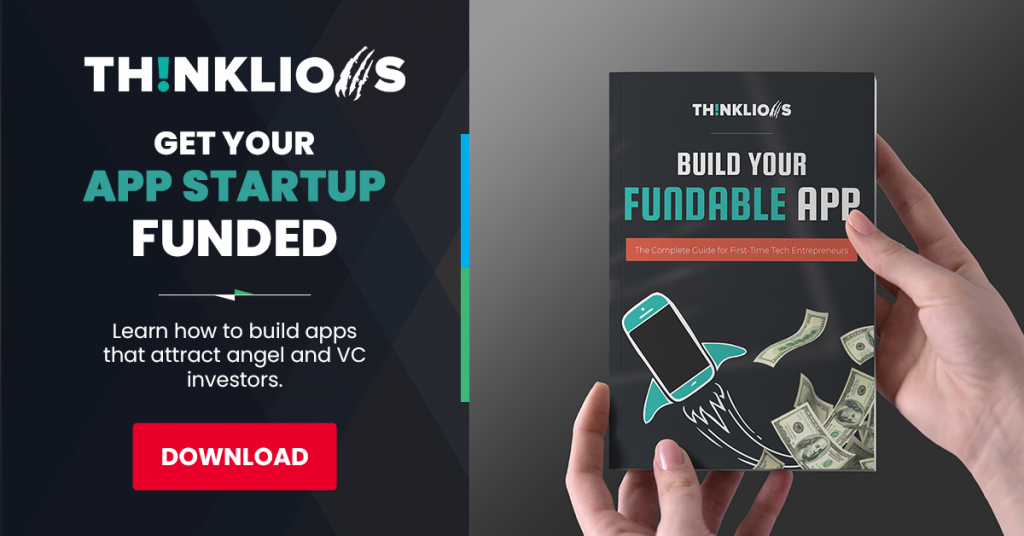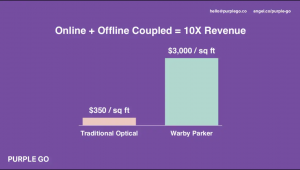Every founder hopes to launch the next unicorn startup. However, billion-dollar businesses usually require millions of dollars in funding to scale. By studying the best pitch decks, entrepreneurs can learn the nuances of what it takes to secure investors.
A pitch deck is a critical tool in a startup’s fundraising journey. However, not every pitch deck is equally effective. The best pitch decks strike multi-million deals, while the worst fail to capture investors’ interest.
Searching Google for a pitch deck template isn’t enough to create a successful design. When approaching investors, the goal is to be memorable and effective. Unfortunately, most pitch decks fail in the fundraising process. While they may contain the right slides and information, they don’t stand out.
By studying examples of successful startups that raised millions, you can learn what investors look for in the best pitch decks. In this article, we’ll introduce you to 30 of the best pitch decks we’ve seen over the last few years. Furthermore, we’ll explain why we believe they were successful and what you can learn from them.

1. Dropbox
Dropbox is a cloud storage service that lets you save files online and sync them to your devices. The platform makes it simple for users to share files and folders with others without attaching large attachments to an email.
The team introduced the product at Y Combinator’s Demo Day in 2007. Since then, Dropbox has acquired hundreds of millions of customers. The company has also become an example of how to build a startup from the ground up.
The pitch deck showcases Dropbox’s innovative product, explains its traction, and validates its business model. Investors quickly displayed interest, and Dropbox struck its first investor deal shortly after its Demo Day appearance.
The Pros of Dropbox’s Pitch Deck
Dropbox’s presentation may seem outdated compared to many modern pitch decks. It could use more graphic design, but the information is clear and presented in an easily digestible manner.
The pitch deck explains the ideal situation by describing what things look like “in a perfect world.” In this slide, the deck connects readers to the problem. It helps them visualize what life would look like if they didn’t struggle with digital storage issues.
At the time, consumers weren’t aware that one could have “your files available wherever you are, on any device.” In 2024, this value proposition probably doesn’t seem so unique. However, in 2007, forgetting your USB drive at home led to significant anxiety. Users had no way to access their files without a physical drive.
Ultimately, Dropbox changed how the world stores and shares files, and its pitch deck validates this point.
The Dropbox pitch deck encourages engagement from the viewer by presenting questions like “Why Now?” and “Why Better?” The team identified which questions the audience was likely to ask. Then, the founders used the deck to take the viewer on a journey by answering their questions at the ideal moment.
Dropbox’s slides may seem outdated, but the “no-fluff” approach led them to success. The text is large enough to read, and each slide gets straight to the point. Every word has a purpose, and every sentence is intentional.
Dropbox’s Lifetime Funding
The Dropbox team leveraged its pitch deck to raise a $1.2 million seed round in 2007. The company raised over $1.7 billion in funding over 11 rounds.
2. WeWork
WeWork is an American commercial real estate company that provides flexible shared workspaces for technology startups and other businesses. The company designs and builds physical and virtual shared spaces and offices for companies of all sizes.
WeWork’s reputation has suffered over the years as a result of bad leadership and overfunding. However, its failures don’t take away from its ability to rank in our best pitch decks list. The team produced several pitch decks since its earliest stages. In our opinion, Dropbox’s Series D presentation is the best example of showcasing traction and describing plans.
Why It’s On Our Best Pitch Decks List
Unlike DropBox, WeWork’s pitch deck is design-heavy with a modern aesthetic. The slides follow a predictable theme with a bold title, a short text blurb, and a simple but informative graphic. The color scheme (black and yellow) is consistent across every slide, which makes it visually appealing to the audience.
But when creating our best pitch decks list, graphic design is only one component. It takes skill to present this amount of information without overloading the slide. Yet, WeWork figured out the perfect balance to provide information while peaking the audience’s curiosity.
Instead of “warming up” the audience, the team immediately gets to the meat of the presentation – traction. The Company Overview slide showcases their stats upfront, with impressive metrics that investors would find difficult to ignore. Few investors can look away when a company presents statistics like 109% CAGR and revenues of $121.4 million.
While visual aesthetic is less important than content, WeWork’s design stands out. Every slide draws viewers in with complex information simplified through charts and familiar logos. The team slide is simple and shows authentic images of its founding members. If a picture speaks 1,000 words, it speaks a million in a pitch deck.
A Validated Hypothesis
The pitch deck tells the story of how work is rapidly shifting away from the office. Even before the pandemic, the founders realized that remote working was the future. The deck explains how millennials approach work differently. Unlike past generations, they choose freelance and work-from-home options over the traditional office setting.
By the way, they were right – today, more people work from their homes and shared office spaces than ever before.
WeWork’s technology is a significant part of its offering. Still, the founders only dedicated one slide to its technology. Instead, they focused on showcasing the customer problem and their plans for capitalizing on the emerging market opportunity.
WeWork’s Total Funding
The founders raised $335 million in investor funding with its Series D pitch deck. In total, the company raised $4.45 billion over 11 rounds from 14 investors.
3. Copper Cow Coffee
It can be challenging to make coffee sound exciting when competing for capital against innovative tech startups. The Copper Cow Coffee pitch deck successfully explains how it innovates a stagnant market.
Copper Cow Coffee offers sustainably-sourced, all-natural coffee, sold in a kit that includes coffee and creamers. The company had humble beginnings but has expanded rapidly. Today, it’s products are available in major retail stores, including Whole Foods, Walmart, H-E-B, and Sprouts.
Despite the rapid success, Copper Cow Coffee’s journey began with a simple but impactful 11-slide pitch deck.
Why It’s An Awesome Pitch Deck
Entrepreneurs often overlook simplicity during investor pitches, but Copper Cow Coffee proved that less is more. For comparison’s sake, there are more words in this paragraph than in the company’s entire pitch deck. The team streamlined all the information into simple but powerful statements like “Craft coffee for anyone, anywhere.”
Unlike other decks on this list, the founders didn’t use complex graphs and charts to present information. Instead, they showcased the opportunity in a way that even a kindergarten student could understand. For example, the team used a few words to describe market size, not bar charts and line graphs. With the statement, “32 billion – American Coffee Industry,” anyone could quickly visualize how large the market is.
You could argue that Copper Cow’s pitch deck is too simple and minimal. However, when pitching an idea, you want the audience to pay attention to the presenter, not the slides. Copper Cow’s deck allows the audience to grasp each concept without requiring long text or an explanation.
Did Copper Cow Raise Funding?
Copper Cow Coffee participated in 500 Startups and raised over $1 million in seed funding. In total, the company has generated $11.5 million in investor funding.
4. Purple Go

(Click the image to view Purple Go’s pitch deck)
Purple Go is an iPad-based platform that allows eyewear retailers to streamline online operations. The all-in-one platform automates tasks throughout the sales process, freeing up staff members and maximizing operations efficiency. Although Purple Go serves a niche and uber-targeted audience, startups can learn a few lessons from their pitch deck.
Pitch Deck Highlights
Purple Go utilized a sleek design and approach, telling its story with simple statements and highly-focused slides. While most startup pitch deck templates suggest a Problem Slide, Purple Go decided to forego this recommendation.
Instead, the deck tells a story of how Purple Go’s clients feared the impact of tech-enabled competitors. But, by adopting Purple Go’s mobile-connected stores, they multiplied their revenue by up to 10x.
The pitch deck includes several Solution slides, but they don’t display every feature. Each slide displays a short statement with a visual that explains how the product solves the customer’s problem. Phrases like “Cut Time to Sale in Half” explains the value proposition without using bullet points or paragraphs. The slides focus on the specific functions that heighten the value proposition without wasting space on less impactful features.
The team proves its Traction with a few hard-hitting statistics, such as “Pilot Store – $150k Annual Revenue.” Purple Go gives the audience the “what” of the solution but gives room so the presenter can fill in the blanks.
Did Purple Go Raise Funding?
With this pitch deck, The Purple Go team raised $150,000 in seed funding from 500 Startups.
5. Blue Wire
Blue Wire is an audio-based media company. It hosts more than 120 podcasts with athletes, influencers, and professional sports franchises. The founders recognized that millennials preferred digitized media (like podcasts) over traditional sports radio.
The Blue Wire founders designed a great pitch deck that easily made our best pitch decks list. With only nine slides the company proved a growing need for its solution in the market.
Why Do We Love This Investor Pitch Deck?
This pitch deck successfully displays how sports fans’ habits have shifted from one extreme to another. It explains how television loses 150,000 subscribers monthly, while podcasts have grown by more than 90 million listeners.
The team also proved its future potential by showing the combined follower numbers of its influencers. It also displayed logos from dozens of creators seeking to partner with the company. The deck validates a demand for the solution by showcasing notable statistics. For example, the brand received 2.5 million listens over 11 months and doubled its user base monthly.
The Company Raised HOW MUCH!?
Using this pitch deck, the company raised $150,000 in pre-seed funding. To date, Blue Wire has raised $9.9 million in funding from angel investors and venture capitalists.
6. SnapChat
It seems like Snapchat has been around forever, but it launched just over a decade ago. In 2010, it was just a new social media platform hoping to find its first capital partner. The company had a great concept, a cult-like following, and clear competitive advantages. The company had many positives, but the team still needed a stand-out pitch deck to capture investor attention.
About Snapchat’s Startup Pitch Deck
Founders often use pitch decks to communicate with investors, but they serve other purposes, too. For instance, Snapchat created a sales deck to reach brands with its advertising and marketing services.
The Snapchat pitch deck sacrifices a title slide to get right to the value proposition. It opens with a bold and confident statement, “Snapchat is the best way to reach 13 to 34-year-olds.” This statement immediately draws advertisers’ attention – especially those targeting young millennials. The risk of grabbing viewers’ attention with this approach is that after making the statement, the next slides must prove it.
Snapchat validates its opening statement on the following slide. The team added a message that explains its penetration level for its targeted audience. The slide explains that “More than 60% of 13 to 34-year-old smartphone users are Snapchatters.” Then, it follows up with another intense metric – “2+ billion video views every day on Snapchat.”
Snapchat’s pitch deck provides many lessons that startup founders can learn. First, eliminate the fluff and focus on meaningful statements. Then, use strong statements in your deck that captivate the audience and provide evidence using real data.
The Sales Deck Impact
The sales deck set the foundation for Snapchat’s advertising services. The company now earns more than $2.62 billion in advertising revenue each year.
Snapchat’s sales deck did not influence its fundraising activities. But in case you wondered, the company has raised more than $4.9 billion in investor capital since its inception.
7. Peloton
The home fitness equipment industry continues to reinvent itself with new equipment and products. From ab stimulators to workout video series, there’s always some new brand claiming to help you achieve your dream body.
However, in 2012, Peloton launched as an innovator in the fitness hardware and technology spaces. The company combined traditional fitness equipment with modern tech solutions. Its solution includes internet-connected stationary bikes that enable subscribers to participate in at-home classes through streaming media.
How Peloton Made Our Best Pitch Decks List
The Peloton team knew that its product wasn’t for every person interested in fitness. With a high price tag, Peloton’s customers meet a specific demographic, lifestyle, and income bracket.
The Customer slide outlines Peloton’s ideal customer. These consumers are high net worth, married, and already spending more than $150 per month on fitness. Peloton customers earn a high income and are willing to use their disposable income to achieve their fitness goals.
Peloton’s investor deck shows that the team has deep knowledge of competitors. The team used several slides to explain its competitive advantages over other brands. Statements such as “We are not a gimmicky fitness brand” make a huge impact. The simple sentence puts distance between the brand and those with laughable fitness products (yes, I mean you, Shake Weight).
The pitch deck refutes viewers’ objections immediately and removes the “bad product” stigma often associated with fitness products.
The Venture Capital Raise
Peloton raised $400,000 from investors in the seed round. In a later round, they used their Series A pitch deck to raise $3.5 million. Throughout its lifetime, the company raised $1.9 billion, participated in six acquisitions, and went public (2019).
8. Transferwise
Transferwise (now called Wise) launched in 2010 and emerged as a leader in global payments. Wise, a money transfer platform, allows individuals to send money overseas quickly. The founders realized that millions of people around the world faced high fees for remitting money. By solving this issue for millions of people worldwide, the company earned billions of dollars.
What Stands Out in Wise’s Pitch Deck?
We gave praise to some earlier examples for their minimal approach to text and design. However, we believe Wise has the perfect amount of text for each slide. The deck provides enough information to understand the concept without overloading each slide.
The How It Works slide clarifies how easily users can send money using the platform. In this slide, Wise simplified the remittance process into four steps.
Wise simplified its Competition slide by listing each competitor category and the companies within each group. This approach allows the founders to explain each competitor group during the pitch, instead of comparing each individual company.
How Much Did Wise Raise?
Wise has one of the best seed pitch decks among the unicorn startups of the last decade. With this deck, the company raised $1.3 million in seed funding from IA Ventures and Index Ventures. To date, the company has raised over $1.3 billion from investors.
9. Kickfolio
Kickfolio (now App.io) introduced an innovative tool that allowed iOS applications to run in the browser using HTML5 technology. The technology helps brands promote their applications, find new users, and engage their audience with an interactive application demo.
What Can You Learn From This Pitch Deck?
This pitch deck is an excellent example of how a brand can use visuals to engage viewers with its story. Instead of explaining the solution with bullet points, the team uses product images to demonstrate its functionality. For instance, Kickfolio showcased its traction with a simple but large graph. The team strengthened the slide by explaining user engagement, with a statement that says, “2000+ signups in 6 weeks.”
The company also added real reviews to the pitch deck so investors could see its value proposition in action. By doing so, Kickfolio made it clear how the solution impacts the lives of actual users.
How Much Capital Did They Raise?
With a world-class pitch deck, the founders raised $1.2 million in seed funding from investor partners.
10. Alan
Alan is a unique and innovative digital health insurance platform. The company improves the health insurance process by focusing on the user experience and providing cost-affordable plans. The team established the business in a saturated sector by providing top-level customer service and a competitive product.
Here’s Why We Love This Deck
To be clear, Alan’s pitch deck is more than double the length we’d recommend to our clients. Despite the length, several qualities stand out.
First, the visual presentation is masterful. The design is extensive, but it adds to the presentation instead of taking away from it. Alan’s branding is strong and consistent throughout the deck. It utilizes the brand’s colors and maintains a theme that draws viewers into the presentation.
Alan’s deck begins with an elevator pitch, allowing the audience to understand its product offering immediately. The team also added a slide that explained their purpose for raising Series A funding. With the funding, they plan to expand in Europe and transition into a healthcare platform.
We’ve seen the minimal approach used in several other presentations. Alan definitely did not take this approach. The deck is longer than we recommend, but it gives enough information to stand alone without a presenter. Still, the length of the deck would bore the audience during a live investor pitch.
Alan’s Series A Round
The company raised €23 million during its Series A round. In total, Alan raised over $558.2 million from angel investors and venture capital firms.
11. Castle
Castle is an innovative and process-shifting real estate solution for rental property owners. The company sums up its value proposition with the slogan, “Put your properties on autopilot!”
Ultimately, Castle exists to help owners manage properties without the common landlord headaches. Castle serves a highly specific target market, so the brand may be unfamiliar to you. However, its pitch deck has several shining qualities that any founder can learn from.
What Can You Learn From Castle?
Castle’s presentation is a great example for founders wondering what a great pitch deck looks like. The design is modern and exciting, utilizing a constant theme, graphics, product images, and icons. The icons highlight each point, bringing the viewers’ eyes directly to the most critical points of each slide.
Castle’s format is similar to most pitch deck templates. However, the pitch deck uses this familiar structure to its advantage. The startup immediately showcases the primary customer problem. They present a problem statement that reads, “Rental property owners want to make money without the work of being a landlord.”
Each subsequent slide enhances the overall story and gives the audience another layer of information. The flow leads to a concise elevator pitch – “Automate landlording through software and on-demand labor.”
Castle shows us that the best pitch decks aren’t the ones that present a massive amount of data. Instead, they present the right information at the right time to support the story and capture viewers’ attention.
Did Castle Raise Funding?
Since its inception, Castle has raised $3.3 million in seed funding from angel investors and venture capitalists.
12. Adpushup
Adpushup is a successful startup that streamlines the process of optimizing ad placements. The solution enables publishers to improve ad performance by testing different ad placements, sizes, and types. Adpushup’s pitch deck design is simple, but the information it comprises was critical to the company’s funding success.
What We Like About Adpushup’s Slide Deck
Many entrepreneurs believe revenue is the only attractive metric, but Adpushup proved that other metrics are equally important. For example, the Traction slide validates its rapid growth, using impressions as a metric. This metric enabled them to prove a high demand within the market, even though the business hadn’t earned any revenue.
In addition to describing prospective customers, the deck displays the solution’s impact through existing customer experiences. It includes a case study showing its product’s effectiveness in a real-world scenario. Social proof isn’t just gold for attracting potential customers; it also helps to sell your pitch to investors.
Did Adpushup Raise Seed Money?
Since its inception, Adpushup has raised approximately $632,000 from partnered investors.
13. LinkedIn

(Click the image to view LinkedIn’s pitch deck)
The LinkedIn Series B pitch deck is ancient compared to others on our list. Still, it’s excellent study material for startups looking to develop a compelling investor pitch.
LinkedIn launched during the social media craze, when many new social network platforms entered the market, and competition peaked. However, it took a different approach and focused on a professional audience.
LinkedIn’s deck is overloaded with text and lacks a modern design. Still, it is a fantastic example of how a seed round pitch deck may differ from a later round deck.
LinkedIn’s pitch deck uses a massive amount of text and has an outdated design. However, it is a fantastic example of how a seed round pitch deck may differ from a later round deck.
The Takeaway for Social Media Startups
Seed-round startups should refrain from using as many slides as LinkedIn used in its pitch deck. Brevity is critical to success for early-stage pitch decks. However, in later rounds, more robust decks are often necessary.
By the time it held its Series B round, LinkedIn had grown into serious competitor. Now, the company had several members, proven user engagement, referral metrics, case studies, and a revenue plan. The company had the challenge of presenting this myriad of accomplishments within its deck.
Since LinkedIn already had investors’ attention, it didn’t face the same restraints as a new startup. New startups have to earn the audience’s attention. By the time they have a notable reputation, investors automatically give them their full attention.
LinkedIn’s deck clearly defines its primary focus – establishing its network. Furthermore, it explained why this task is critical to achieving its growth objectives. Successful pitch decks explain how the team will use investor funds to expand the business and scale its success. LinkedIn showed significant traction through the deck, proving that its actual growth outpaced its projected metrics.
How Much Capital Did LinkedIn Raise?
LinkedIn raised $10 million from Greylock Partners during its Series B round. Over its lifetime, LinkedIn raised over $154.8 million in investor funding. The company’s valuation grew to $352.8 million by the time it went public in 2011.
14. Canvas
Canvas provides a business solution that allows corporations and organizations to digitize their paper assets. The solution aims to eliminate paperwork by transitioning business processes through mobile applications.
We selected Canvas as one of the best startup decks because of how it used imagery to draw the audience’s attention.
What Caught Our Eye About This Investor Deck?
Canvas starts its deck with simple visuals explaining how the world has moved from analog to digital. For instance, books changed to eBooks, and CDs transitioned to MP3s. Now, according to Canvas, document storage will shift because of its solution.
In the subsequent slides, the Company describes five massive issues faced by companies with paper-based processes. With this approach, Canvas shows the audience’s specific challenges. Furthermore, it proves the time is right for a new solution to enter the market.
We also appreciate Canvas’s Competitive Landscape slide. Most startups use a table with checkmarks. In contrast, Canvas compares its solution’s approach against competitors. According to the deck, competitors focus on the what, while Canvas focuses on the why.
Canvas Raised How Much!?
Canvas’s pitch deck and investor pitch were successful, and the company raised $24.1 million in investor funding.
15. SickWeather
Sickweather is an app that analyzes data to predict and forecast population health. The app claims to accurately predict illness outbreaks 91% of the time and two weeks before the CDC on average. Sickweather’s sample pitch deck explains the importance of trust and credibility. These factors are especially critical when your clients are some of the most respected brands in the world.
Sidenote: Sickweather became even more relevant after the pandemic. In April 2020, the company launched a COVID-19 scoring feature. This feature made the company a leading predictor of which cities would experience COVID outbreaks.
Sickweather’s Pitch Deck Takeaway
The first thing that caught our attention was the addition of a video on one of the slides. Shorter videos work well during a live pitch, while long videos can help enhance the deck during the introduction stage.
Early in the deck, Sickweather lists previous and existing clients. The mentioned brands are well-known and credible, immediately giving the startup a high level of authority. Furthermore, the team used visual graphs to showcase impressive monthly recurring revenue growth.
Lifetime Capital Raise
Sickweather has raised $2.6 million in investor funding since its inception.
16. Match Box (Tinder)
Match Box is the original name for Tinder, a dating app used by millions of people worldwide. Even with many competitors, Tinder overtook the market by implementing a gaming aspect to its platform. Instead of just adding friends, individuals could swipe left or right to express interest in another user. Match Box’s startup deck is an excellent example of balancing creativity and simplicity to generate investor interest.
What We Like About Match Box’s Pitch Deck
Match Box eventually rebranded to Tinder. Now, Tinder is the most successful dating app in the world. The company’s ability to take over the world started with a well-designed pitch deck.
Match Box’s slides are rather minimal compared to most startup pitch decks. However, it introduces a real-world scenario to explain the problems daters face (fear of rejection). The pitch deck uses each slide to tell a story, and half of the deck simply includes screenshots of the application.
In the pitch deck, Match Box introduces the customer, showcases their challenges, and proves their problem-solution fit.
Finally, the last slide shows a transparent revenue model. Many dating apps struggle to generate revenue. However, in its deck, Match Box showed its process for leveraging its customer base to create several income streams.
Match Box’s Lifetime Funding
In September 2016, Tinder received an investment of $1.4 million. Since then, the company has participated in three separate acquisitions.
17. Airbnb
Today, almost everyone in the nation has used or is familiar with Airbnb. Founded in 2008, Airbnb is a web service that allows people visiting other cities to book rooms from locals.
Airbnb provides a classic marketplace platform that enables renters and travelers to transact. It allows users book a private room or a property, often offering more amenities than a hotel. Property owners act as hosts on the platform, using Airbnb to find renters and earn income from their vacant properties.
With a compelling pitch deck, Airbnb conveyed its advantages against the competition and expressed its unique market position.
The Upside of Airbnb’s Deck
First-time founders often focus all their attention on the presentation’s design and visuals. Unfortunately, while the slides look great, they often lack the essential qualities of a good pitch deck. Over-designing can cause distraction and pull your audiences’ focus to the wrong elements. As Steve Jobs once said, simplicity is the ultimate sophistication.
Airbnb’s pitch deck is the perfect representation of effective simplicity. The presentation explains the customer problem, such as the price of hotels. Additionally, it uses real statistics to prove the market potential. It defines the challenge entirely before introducing the company’s product, service, and feature offering.
Airbnb relies on technology to provide its services, but the deck only vaguely mentions the platform itself. One slide explains the technology, but the rest focus on the market and the go-to-market strategy.
The founders represented the solution with only seven words – “Search By City. Review Listings. Book It!” Our team fell in love with this approach.
Entrepreneurs typically spend the entire pitch explaining the product itself. Yet, they don’t spend enough time on the things important to investors, such as the strategy and ROI potential.
Airbnb – A Fundraising Success Story
Before this pitch deck, founders Brian Chesky and Joe Gebbia had no fundraising experience. However, even without expertise, they closed a $600,000 seed round led by Sequoia Capital. In total, Airbnb raised $4.4 billion over several financing rounds.
For more information on what makes this presentation special, see our full breakdown of Airbnb’s pitch deck.
18. TeaLet
Tea is one of the world’s most popular commodities. However, obstacles exist in the supply chain process, slowing down the transfer of goods from farms to individuals. Furthermore, the market relies on middlemen to distribute products, which drives up prices for the final consumer. As a result, tea farmers have to deal with low-profit margins, and consumers can’t access high-quality tea options.
TeaLet exists to streamline the supply chain. The company directly connects tea growers with wholesale buyers and retailers using blockchain technology and a web-based application. As a result, TeaLet has tripled the profits for tea farmers while reducing consumers’ prices for top-quality tea.
TeaLet’s pitch deck enabled the team to achieve its objective of attracting and striking a deal with its first investors.
About TeaLet’s Killer Deck
TeaLet’s pitch deck immediately presents the most important information. The presentation starts by displaying its most vital metric – We’ve sold 100,000 cups of tea in 20+ countries. By quickly showcasing traction, TeaLet’s pitch deck gives the team massive credibility. Furthermore, it grasps the audience’s attention early on in the pitch.
One of our favorite qualities of this pitch deck is the use of hard numbers. The slides use hard numbers to prove the market opportunity. By showcasing market activities (such as acquisitions by similar companies), TeaLet creates FOMO among potential investors.
While content is more important than design, TeaLet’s design theme stands out against many other startup pitch decks. The deck is design-heavy, but the visual adds drama to the message instead of distracting from it.
How Much Funding Did TeaLet Raise?
With a great product and a well-thought pitch deck, TeaLet secured a $240k seed round from angel investors.
19. Moz (SEOmoz)
Moz, formally known as SEOmoz, is a SaaS company that provides a suite of inbound marketing and SEO tools. Gillian Muessig and SEO influencer Rand Fishkin launched Moz in 2004 and transitioned into SEO SaaS software in 2008.
By the end of 2017, Moz served more than 36,000 businesses worldwide. During this period, users crawled more than 168 million URLs and researched over 4.3 million keywords.
Building a leading software solution like Moz is no easy feat. Yet, Moz created an amazing pitch deck that impressed investors and allowed them to secure necessary startup capital.
Why is Moz On Our Best Pitch Decks List?
Rand Fishkin has become the Michael Jackson of SEO. He is well-known as a marketing legend now, but he had to build his legendary status over several years. Moz’s pitch deck explains where the business started and how Rand built the company from inception without outside funding.
Moz used its slides to explain how the founders leveraged free traffic through inbound marketing to build and expand the business. Describing these methods allowed Mox to validate the potential of its software.
This pitch deck is longer than a standard startup pitch deck. However, when the team designed it, Moz had already completed an initial seed funding round and had significant traction. Therefore, in later series rounds, additional slides are often necessary to effectively showcase the growth of the business.
Did Moz Reach Its Funding Objectives?
A strong pitch deck and a validated product allowed Moz to raise $29.1 million over five funding rounds.
20. Front
According to the company Front, it has produced the “first inbox meant for teams.” Using Front, organizations can organize emails, route them to team members, and maximize collaboration. The company launched in 2013 and quickly grew its dominance in the corporate email sector. Today, Front serves over 5,000 businesses and has more than 100 employees.
Explaining Front’s Pitch Deck
The overall aesthetic of startup pitch decks has evolved over the years. Front’s deck comprises elements that you wouldn’t find in older pitch deck examples, like Facebook or LinkedIn.
For example, Front uses a plot graph to showcase how each competitor fits into the landscape. This graphic element is easy on the eyes and makes a complex concept simple. The use of graphics continues with well-placed charts and graphs throughout the deck. Front showcased its traction and growth clearly while maintaining a minimal and clean appearance.
Front’s Fundraising Outcome
Front’s pitch deck enabled the company to reach its funding goals. To date, Front has raised over $79 million in venture funding.
21. Mixpanel
Mixpanel provides a solution that tracks and monitors web and mobile applications. With Mixpanel’s toolset, app owners compare new campaigns with A/B tests, execute user surveys, and build funnels.
The Pros of Mixpanel’s Pitch Deck
The simplicity of this presentation was the element that made us add it to our best pitch decks list. Compared to other pitch decks, it is relatively minimal with a focus on text. However, in a time when most pitch decks are over-designed, Mixpanel’s lack of graphic design stands out.
The founders created a great storyline within the deck that keeps viewers engaged. It begins by clearly stating the market’s problems in a single sentence. Then, it explains the solution with minimal text.
With a dark non-distracting background and white font, the message is clear. Furthermore, it contains singular and focused concepts instead of cluttering the slides with useless visuals.
Mixpanel’s Funding Rounds
The company achieved its financing goals and raised $77 million over five investment rounds.
22. Facebook
If you’re old enough to remember the launch of Facebook, you might recall that it first launched as “thefacebook.” Facebook is a social media platform that Mark Zuckerberg launched in 2004. Over the last 20 years, Facebook has grown to become one of the world’s top-earning companies. The platform has billions of users and an estimated $140 billion valuation.
Pitch Deck Lessons for Social Media Startups
Since Facebook launched in the early 2000s, its pitch deck is now ancient. The startup landscape has significantly changed since Facebook’s early days. Gone are the days when pitch deck slides included entire text paragraphs.
Still, Facebook’s pitch deck accomplished its objectives. It showcased the features, explained the launch strategy, and presented traction. Facebook also added media quotes to validate its impact and showcase its traction.
Facebook’s Fundraising Success
Facebook raised over $1.3 billion before going public in 2012.
23. Buzzfeed
BuzzFeed is an industry-leading internet media, news, and entertainment company that has brought new trends to digital journalism. John Peretti founded Buzzfeed in new York in 2006. It focused on showcasing viral content like articles, lists, videos, and quizzes.
BuzzFeed exploded over its first few years and now hosts several brands, including Nifty, Goodful, As/Is, and Tasty. By 2018, BuzzFeed Video’s YouTube channel had generated more than 13.8 billion views and 17.2 million subscribers.
The Best Aspects of BuzzFeed’s Pitch Deck
BuzzFeed utilized screenshots of the platform throughout the deck, visually engaging viewers and investor audiences. The design strategically visualized important information like revenue and the business model.
In addition, the pitch deck has a strong and attractive Competitor Landscape slide. It shows how the company combines the benefits of the advertising and media sectors.
BuzzFeed’s Lifetime Capital Raise
The BuzzFeed company raised over $496 million and has participated in five acquisitions since its inception.
24. Ooomf (Crew)
Ooomf launched in 2012 as an app discovery platform. After raising $500,000 in a seed round, Ooomf pivoted as a marketplace for digital freelancers.
Ooomf rebranded as Crew, the first marketplace where handpicked creators can work on the projects they love. Ooomf’s marketplace has many clients, including major brands like Apple, Google, Uber, and Dropbox.
Learning From Ooomf’s Pitch Deck
Ooomf made our best pitch decks list because we appreciated its ability to tell a story with minimal text. Each slide is well-designed and suggests a single point of focus. The company used graphics to show the simplicity of creating a project on the platform. It also offers social proof by presenting direct quotes from the platform’s freelancers.
Ooomf’s Fundraising Activity
Ooomf (Crew) raised $9.9 million from 14 investors before participating in an acquisition by Dribbble.
25. Task.ly
Task.ly is a task management tool that helps professionals organize and manage their work lives. The app allows users to track project progress, collaborate with team members, and manage deadlines. The software aims to replace unorganized sticky notes, emails, and tracking docs with one simple-to-use platform.
Task.ly Pitch Deck Lessons
In our opinion, Task.ly’s pitch deck is too long and includes too many slides. With 28 slides, it is more than double the recommended length for startup pitch decks. Fortunately, the team used only a few words on each slide. Therefore, viewers can still flick through the entire deck quickly without spending an excessive amount of time.
Every slide in the pitch deck contains a graphic of some type. Still, every screenshot, image, and icon supports the story and enhances the pitch. Furthermore, the designers condensed the text into short statements – most slide have less than six words.
Lifetime Capital Raise
Task.ly has not released any public funding information. Therefore, we are unsure whether the company raised capital, or how much funding it raised.
26. Pendo
Pendo is a no-code platform that enables businesses to track customer behavior on websites and mobile apps. By leveraging the solution, users can monitor page loads, clicks, focus points, and form submissions. Once the system collects enough data, it draws insights and makes suggestions to improve user engagement.
What Do We Love About Pendo’s Pitch Deck?
As we explained previously, Series B pitch decks are often significantly longer than early-stage ones. By this stage, the business has covered more ground and achieved more milestones. As a result, Series B businesses must represent more information on their slides.
Regarding design, Pendo’s presentation is one of the best pitch decks we’ve come across. Some of the most effective pitch decks lack visual appeal. Still, Pendo squeezed a tremendous amount of information into its slides without compromising the design.
Pendo also used visuals wisely by inserting graphs and charts to display concepts instead of solely relying on text.
Pendo’s Fundraising Success
The team created several decks to raise $108.3 million over seven funding rounds. Furthermore, the company participated in two acquisitions.
27. Coinbase
Coinbase is a secure platform that makes it easy to exchange digital currencies like Bitcoin and Ethereum. As the largest digital currency trading platform, the company earned over $1 billion in revenue in 2017. Since launching in 2012, it has scaled to offer digital asset transactions and storage in over 190 countries.
Lessons from Coinbase’s Pitch Deck
The founders faced a significant hurdle when creating a pitch deck. In 2012, most investors were clueless about Bitcoin and the challenges faced by the small community of crypto investors. Coinbase’s pitch deck had to educate investors on digital currency. It also had to explain why the solution was necessary for the market.
Coinbase’s startup pitch deck explains why other solutions are ineffective and difficult to use. It follows that message with evidence to position the company as the ideal solution for the market’s challenges. It also validated demand by showing massive growth in acquisition, engagement, and revenue.
Coinbase’s Fundraising History
Coinbase raised $547.3 million over nine funding rounds and participated in 12 acquisitions.
28. Contently
The Contently solution addresses the three critical elements of content marketing: strategy, platform, and storytellers. The platform streamlines content marketing by combining expert strategy, marketing services, and a global talent network.
Contently now serves over 200 enterprise clients. It also hosts over 140,000 creatives and has paid more than $40 million to its contractors.
Pros of Contently’s Pitch Deck
Contently’s Series B financing deck presents compelling statistics explaining its market product. According to the states, brands often fail to achieve their marketing objectives. The pitch deck uses platform screenshots to showcase its effectiveness and displays client logos to validate its recent traction.
Contently’s Fundraising Activities
With an excellent pitch deck, the founders raised $19.3 million in capital over seven funding rounds.
29. Yaydoo
Yaydoo is a procurement automation platform that allows companies to streamline their purchasing processes. With Yaydoo, businesses can negotiate with several vendors simultaneously and with one click. Furthermore, the platform enables these companies to save on recurring purchases and reduce their team efforts.
Why Do We Love Yaydoo’s Pitch Deck?
Yaydoo effectively got its point across and validated the potential of its solution using only nine slides. The first slide is the most impressive, providing the fine details of the company’s sales over two years. It also displays logos of previous clients to give the brand more credibility. With significant social proof, it is easy to understand the company’s potential and ability to exceed customer expectations.
How Much Did Yaydoo Raise?
Yaydoo succeeded in raising seed funding. However, no public information is available expressing the amount of capital secured.
30. Backstartup
Backstartup’s platform allows startups and SMEs to manage their legal, accounting, and payroll processes. The founders launched Backstartup in Columbia in 2014, and the business now employs over 50 team members.
Lessons From Backstartup’s Pitch Deck
Backstartup’s investor pitch deck is another example of great design. It utilizes pops of colors and strong visuals to engage the audience in the presentation. The founders started the pitch deck by showcasing the projected market size. Subsequently, it explains the product and details the company’s traction.
The Backstartup team only used 11 slides to impress potential investors. Yet, each slide captures the details of the business with a consistent and visually appealing design theme.
Backstartup’s Fundraising History
Backstartup held three funding rounds, raising a total of $905k throughout its lifetime.
Elements of a Fundable Pitch
Deck
Combined with an impressive pitch, a startup pitch deck is essential for successful fundraising. Great ideas with sloppy presentations that leave key questions unanswered usually fail in the fundraising process. To impress investors, brands need a proven idea, a business plan, and a memorable startup pitch deck.
Thousands of startups send their pitch decks to investors every day. In other words, if you seek investor capital, you’ll need to stand out among the competition. Many startups add every detail they can fit in the deck. They describe the number of users, monthly growth, revenue, feature concepts, and more.
However, the best pitch decks provide an organized presentation with a story-like flow. They present the right information, in the optimal order, with supporting visuals that maximize impact.
Pitch decks can help you raise serious capital if done right. Some entrepreneurs utilize pitch deck writers to create the best presentations. But if you’re creating your own deck or using a startup pitch deck template, there are some tips that will help. Check out the infographic below so you can create successful pitch decks worthy of investment.










